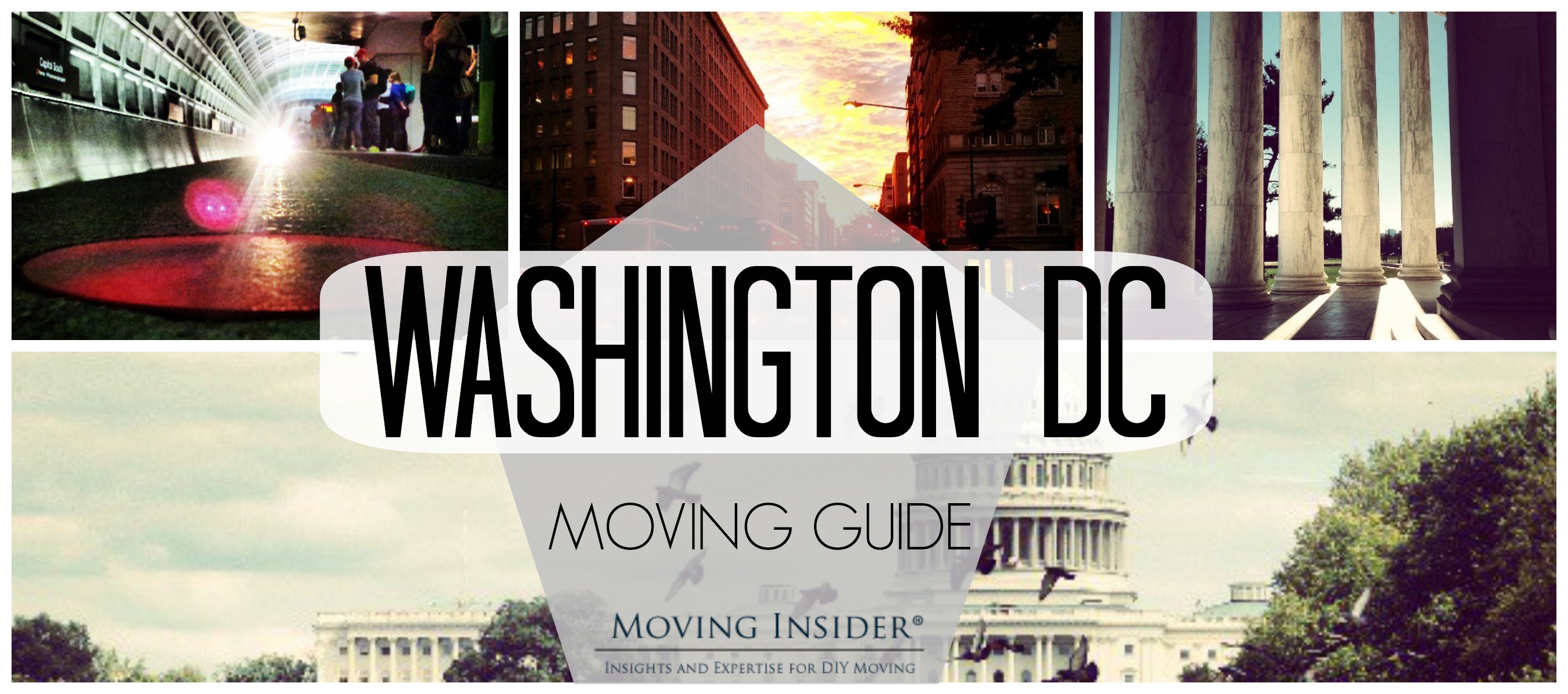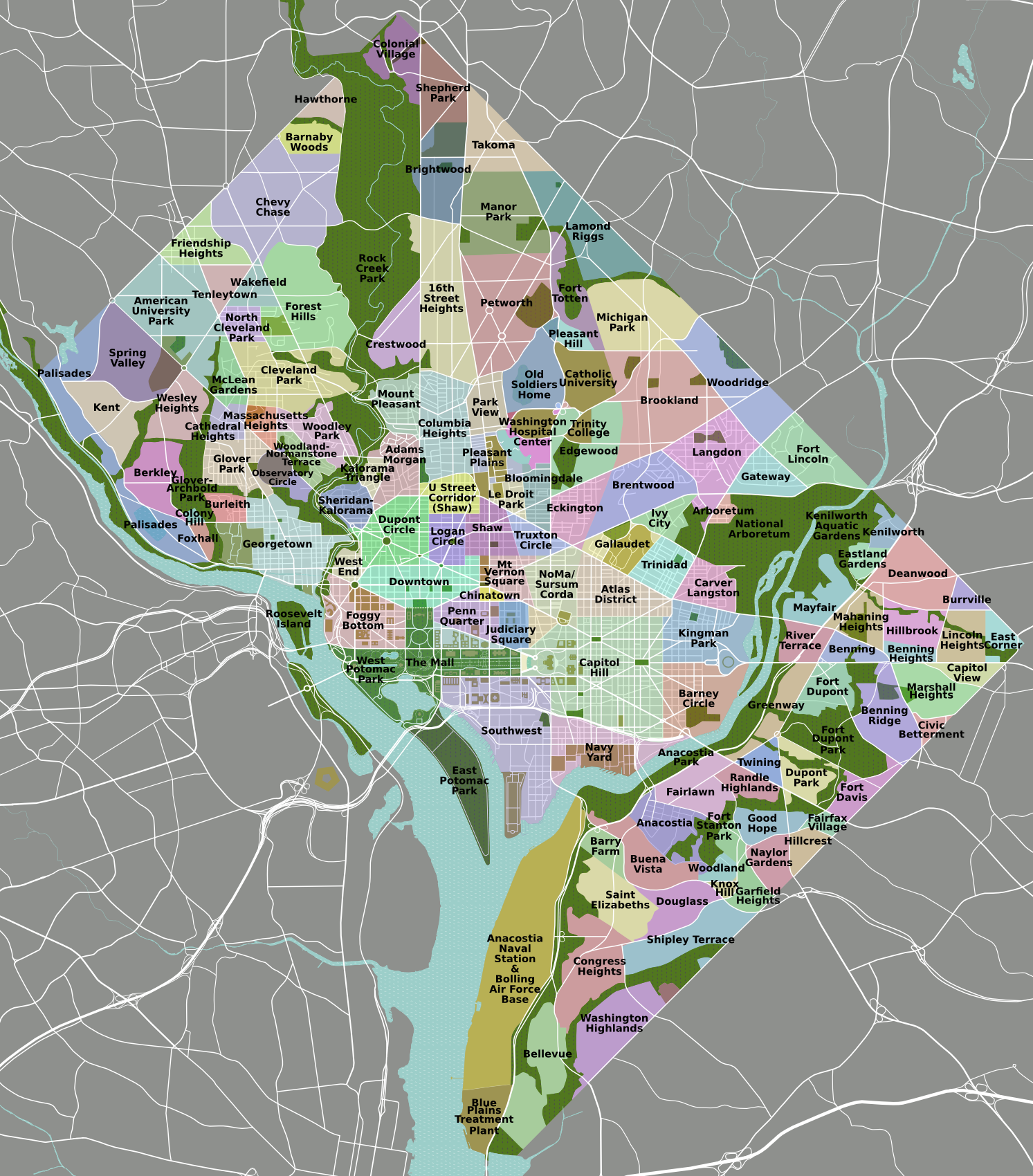
Moving to Washington DC can be a challenge, but living in a city that never stops is certainly a rewarding one. From L to R, Clockwise — Capitol South Metro Station, Farragut Square, Jefferson Memorial, U.S. Capitol. Photos used with permission via Instagram.com/shaynedwyer
Washington D.C. — home to the President of the United States, foreign diplomats, lawmakers and hopefully in the near future, you! The capital of the United States is a great city to live in, and no matter what your reason for moving — work, family or other needs — you’re bound to have a great time living in the District.
Having the luxury of going on an afternoon jog from the White House down to the monuments and then over to the Capitol all while still having time to grab lunch or coffee is one of the many perks of DC living. Mix in cultures that range from young and trendy to upscale and refined, and there is never a shortage of things to do. Did we mention that a large majority of the museums and tourist attractions are free as well? Between playing tourist on the weekends at the Washington Monument or having a picnic at the park on the banks of the Potomac River, you can never run out of things to do. And just when you think you’ve seen it all, something new will catch your eye like the beautiful cherry trees that blossom for a few weeks each year.
Being one of the oldest major cities in America, moving to Washington DC will come with unique challenges however. Most of the living accommodations were built over a hundred years ago and did not account for the many large items we have today. There are many basement apartment setups where you have to go down a set of stairs, make a ninety degree turn and do it all with only nine feet of headroom. It’s also safe say that the city wasn’t designed with extra long moving trucks in mind. But, that shouldn’t stop you — hundreds of thousands of people have done it successfully before and with a little bit of prep ahead of time, you can too.
This Moving Guide will help you navigate your adventure to DC and it broken down to three major parts; Housing, Transportation and Moving In.

From row homes to apartments, DC has many different living arrangements.
Decide How Much Space You Need
The first decision you need to make is picking what type of space you want to live in. Washington has a good mix of newer, high-rise apartment buildings to go along with older apartment complexes and classic row-homes. Each type has its own pro’s and con’s for you to weigh, but there is one thing that is the same across the board.

Many different neighborhoods make up Washington, DC. Each one has its own unique characteristics that might make it a great fit for you. Photo via Peter Fitzgerald/CC
Space comes at a premium and it’s expensive, coming in second place only to Manhattan. So be sure to make careful consideration about how much space you really need. It might be more cost effective to rent a storage unit nearby for extra things rather than pay for a bigger space.
Pick Your Neighborhood
From Dupont Circle on the west side, to Capitol Hill on the east, DC is made up of many diverse neighborhoods that all have their own unique flair. Take a look at your own personal needs to help decide which location is best. Where are you going to work? Do you want a lot of nightlife, or do you prefer a quieter location? How important is being close to corner markets or larger grocery stores? These are all important factors that will help you narrow down the best location for you. Living in Eastern Market and working in Friendship Heights makes for one heck of a daily commute.
Also keep in mind what you decided earlier — what type of space you want. High-rise apartment buildings are generally found in the downtown business district, the Golden Triangle neighborhood and along busy thoroughfares running right downtown. As you stretch farther away, classic row-homes become the norm, with smaller 5-10 unit apartment complexes sprinkled in between.

Stay tuned for part two of the Washington DC Moving Guide from Moving Insider.
Moving to Washington DC: Part 2
Did you know that you can get a special parking permit to assist you during your move in? Or that Washington DC’s Subway system can get you everywhere you need to go? Check back later this month for part two of the Moving Guide detailing just how to move your stuff into the city and how to get around once you’re all settled in.
Have you lived in Washington DC before? What was your experience like? Let us know in the comments below.



